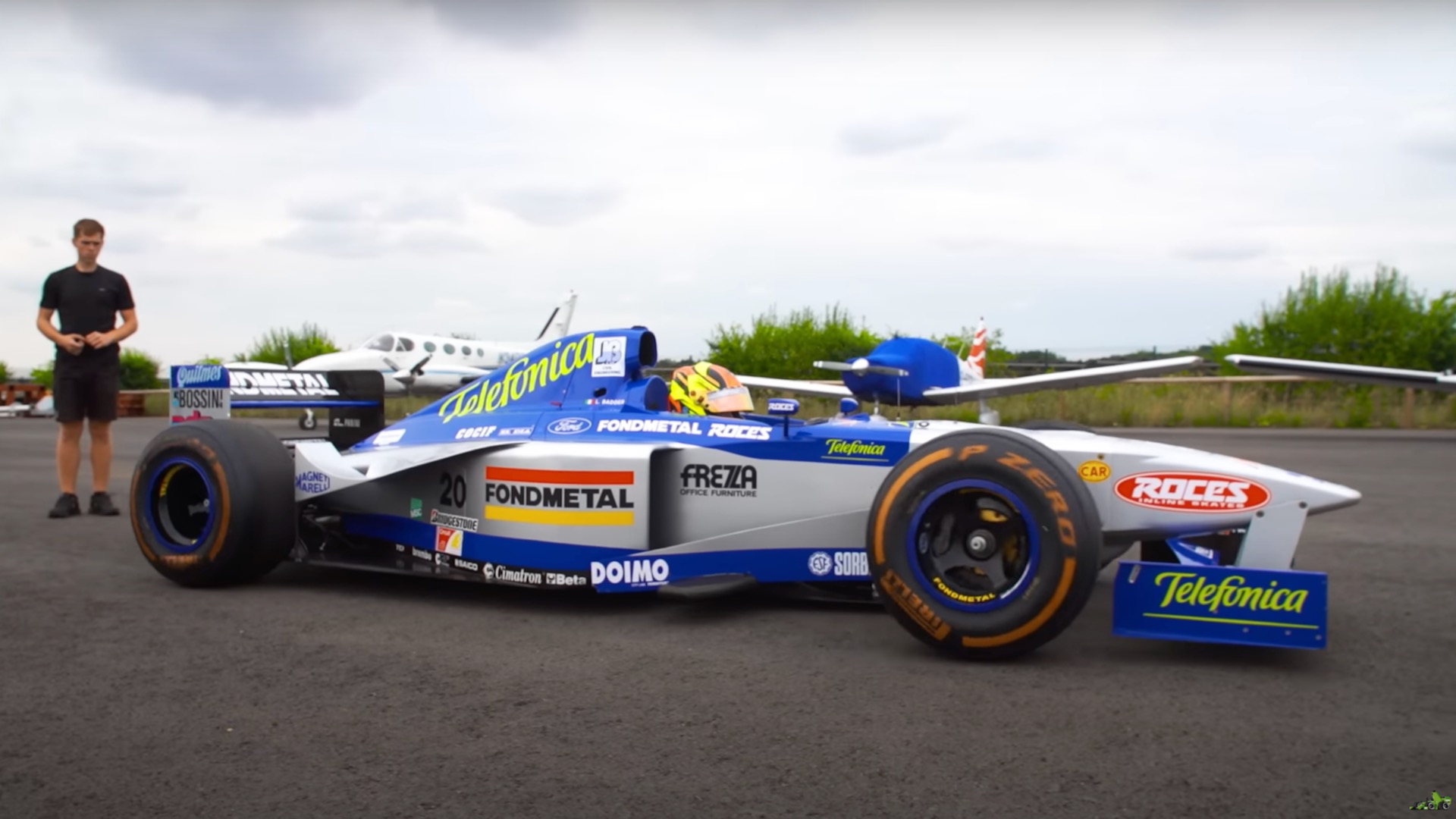Formula 1 is all about speed, but actually getting a car prepped to go out on track requires patience. Even 25 years ago, F1 race cars took hours to start, as YouTuber Matt Amys explains in this video.
The car used for this demonstration is a Minardi M198, campaigned by the Italian team today known as AlphaTauri, during the 1998 season. It wasn’t the most competitive car, as it was estimated to be about three seconds off the pace of Michael Schumacher’s Ferrari F300 and the McLaren MP4/13 that Mika Häkkinen drove to the driver’s title that season, but it’s representative of the technology of the day.
Cars from this period, when F1 used glorious high-revving V-10 engines, can take 1.5 to 2.5 hours to start, depending on a number of factors including ambient temperature (they take longer to get going on cold days), according to TDF, which maintains this Minardi and other vintage F1 cars for collectors.
The process starts by pre-heating the engine with warmed coolant. A common misconception is that the tolerances in these engines are so tight that they are seized when cold. While that isn’t true, running an engine like the M198’s Ford-Cosworth V-10 at lower-than-optimal temperatures leads to excessive wear. Air is also flushed out of the hydraulic lines before the car is started.
Next, onboard air cylinders need to be charged. These provide air to actuate the valve springs, as conventional valve springs can’t keep up with the speed at which the engine revs. The engine is then primed with fuel and cranked over using an external starter motor, which plugs into the back of the gearbox, which in turn spins the crankshaft.
Everything is controlled by an ancient laptop running Windows 95, because the car’s software isn’t compatible with newer computers. Even some period laptops are faster than the car’s onboard computers, which can skew readings. This isn’t a problem limited to race cars from the 1990s; the McLaren F1 also requires 1990s computers to interface with its outdated electronics. If all temperatures and pressures look good, the car is ready to hit the track.
